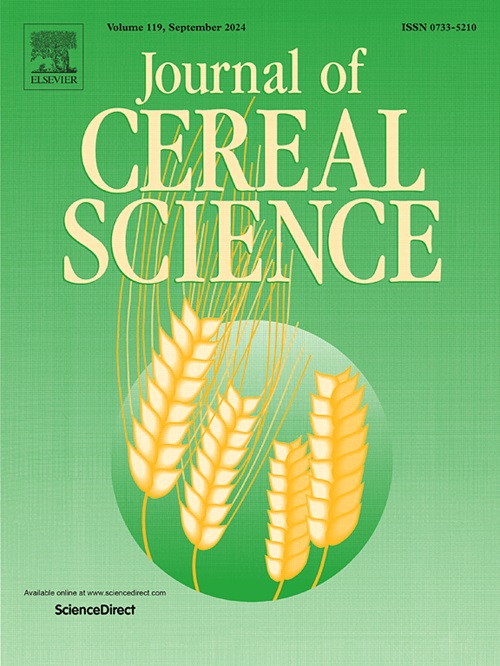IF 3.9
2区 农林科学
Q2 FOOD SCIENCE & TECHNOLOGY
引用次数: 0
摘要
众所周知,普通荞麦芽是一种功能性食品,但热处理会导致使用这些芽制作的最终产品的成分发生变化。本研究的目的是比较用荞麦芽或微芽面粉强化意大利面和饼干过程中某些类黄酮含量的变化,并评估热处理对类黄酮含量的影响。在制备意大利面时,芽麦面粉的比例分别为 0%、10%、15% 和 20%,微绿叶面粉的比例则为 10%。将 0%、5%、10%、15% 和 20% 的芽荞麦粉与小麦粉的混合物用于饼干生产。采用高效液相色谱法测定了荭草苷、同荭草苷、牡荆苷、异牡荆苷和芦丁的含量。饼干和意大利面中的异黄酮苷、同黄酮苷、牡荆素、芦丁和荭草苷含量随芽菜比例的增加而线性增加。在 160 °C 下烘烤 15 分钟可显著降低含芽菜粉饼干中黄酮类化合物的含量(保留因子为 64-74%)。将面条在最高温度为 90 ℃ 的热风炉中烘干 6 小时,然后再烹饪 10 分钟,类黄酮含量没有明显下降。芦丁含量的保留率最低。本文章由计算机程序翻译,如有差异,请以英文原文为准。

Flavonoids profile in pasta and cookies fortified with common buckwheat sprouts or microgreens flour
Common buckwheat sprouts are known to be a functional food, but thermal processing can cause changes in the composition of final products made using those sprouts. This study's aim was to compare changes in the contents of selected flavonoids during fortification of pasta and cookies with flour from buckwheat sprouts or microgreens and to evaluate the effect of heat treatment on the flavonoid contents. The pasta was prepared with 0%, 10%, 15%, and 20% proportions of sprout flour or with 10% of flour from microgreens. Mixtures of 0%, 5%, 10%, 15%, and 20% buckwheat flour from sprouts with wheat flour were used for cookie production. The contents of orientin, homoorientin, vitexin, isovitexin, and rutin were determined by HPLC. The contents of isovitexin, homoorientin, vitexin, rutin, and orientin in cookies and pasta increased linearly with larger proportions of sprouts. Baking at 160 °C for 15 min significantly reduced contents of the determined flavonoids in cookies containing sprout flour (retention factor 64–74%). When pasta was dried for 6 h in a hot-air oven at a maximum 90 °C and then cooked for 10 min, there was no significant decrease in flavonoids. Lowest retention was found for rutin content.
求助全文
通过发布文献求助,成功后即可免费获取论文全文。
去求助
来源期刊

Journal of Cereal Science
工程技术-食品科技
CiteScore
7.80
自引率
2.60%
发文量
163
审稿时长
38 days
期刊介绍:
The Journal of Cereal Science was established in 1983 to provide an International forum for the publication of original research papers of high standing covering all aspects of cereal science related to the functional and nutritional quality of cereal grains (true cereals - members of the Poaceae family and starchy pseudocereals - members of the Amaranthaceae, Chenopodiaceae and Polygonaceae families) and their products, in relation to the cereals used. The journal also publishes concise and critical review articles appraising the status and future directions of specific areas of cereal science and short communications that present news of important advances in research. The journal aims at topicality and at providing comprehensive coverage of progress in the field.
 求助内容:
求助内容: 应助结果提醒方式:
应助结果提醒方式:


